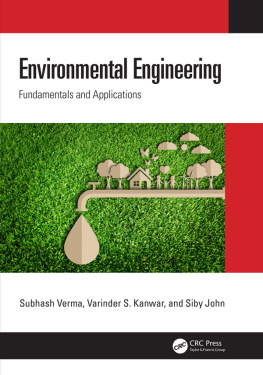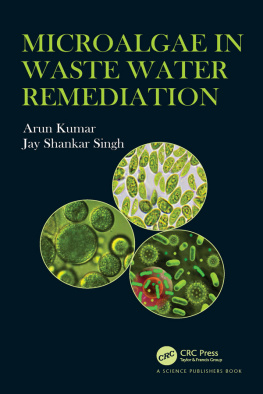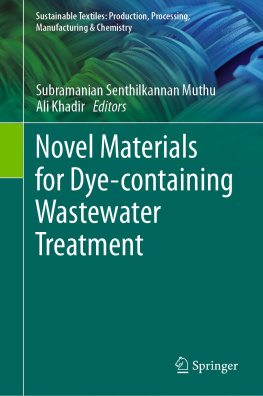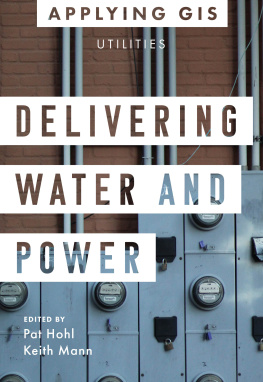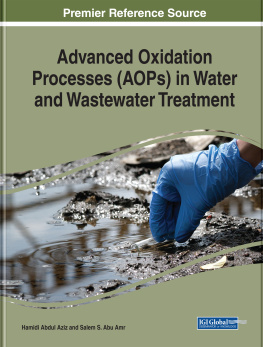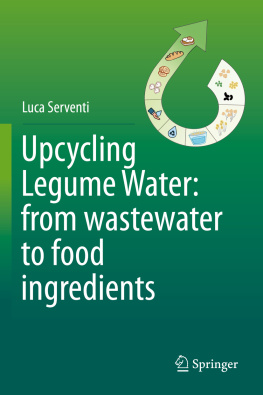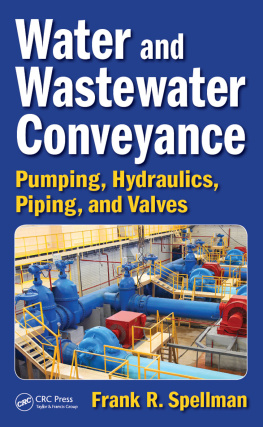Roy Keith Smith - Water and wastewater laboratory techniques
Here you can read online Roy Keith Smith - Water and wastewater laboratory techniques full text of the book (entire story) in english for free. Download pdf and epub, get meaning, cover and reviews about this ebook. year: 2019, publisher: Water Environment Federation, genre: Children. Description of the work, (preface) as well as reviews are available. Best literature library LitArk.com created for fans of good reading and offers a wide selection of genres:
Romance novel
Science fiction
Adventure
Detective
Science
History
Home and family
Prose
Art
Politics
Computer
Non-fiction
Religion
Business
Children
Humor
Choose a favorite category and find really read worthwhile books. Enjoy immersion in the world of imagination, feel the emotions of the characters or learn something new for yourself, make an fascinating discovery.

- Book:Water and wastewater laboratory techniques
- Author:
- Publisher:Water Environment Federation
- Genre:
- Year:2019
- Rating:5 / 5
- Favourites:Add to favourites
- Your mark:
- 100
- 1
- 2
- 3
- 4
- 5
Water and wastewater laboratory techniques: summary, description and annotation
We offer to read an annotation, description, summary or preface (depends on what the author of the book "Water and wastewater laboratory techniques" wrote himself). If you haven't found the necessary information about the book — write in the comments, we will try to find it.
Water and wastewater laboratory techniques — read online for free the complete book (whole text) full work
Below is the text of the book, divided by pages. System saving the place of the last page read, allows you to conveniently read the book "Water and wastewater laboratory techniques" online for free, without having to search again every time where you left off. Put a bookmark, and you can go to the page where you finished reading at any time.
Font size:
Interval:
Bookmark:

Copyright 2018 by the Water Environment Federation. All Rights Reserved. Permission to copy must be obtained from WEF.
Water Environment Research , WEF, and WEFTEC are registered trademarks of the Water Environment Federation.
ISBN 978-1-57278-356-0
IMPORTANT NOTICE
The material presented in this publication has been prepared in accordance with generally recognized engineering principles and practices and is for general information only. This information should not be used without first securing competent advice with respect to its suitability for any general or specific application.
The contents of this publication are not intended to be a standard of the Water Environment Federation (WEF) and are not intended for use as a reference in purchase specifications, contracts, regulations, statutes, or any other legal document.
No reference made in this publication to any specific method, product, process, or service constitutes or implies an endorsement, recommendation, or warranty thereof by WEF.
WEF makes no representation or warranty of any kind, whether expressed or implied, concerning the accuracy, product, or process discussed in this publication and assumes no liability.
Anyone using this information assumes all liability arising from such use, including but not limited to infringement of any patent or patents.
The Publisher works hard to ensure that the information in this publication is accurate and complete. However, it is possible that the information may change after publication, and/or that errors or omissions may occur. We welcome your suggestions on how to improve this publication and correct errors. The Publisher disclaims all liability for, damages of any kind arising out of use, reference to, or reliance on information included in this publication to the full extent provided by state and federal law.
The Water Environment Federation (WEF) is a not-for-profit technical and educational organization of 35,000 individual members and 75 affiliated Member Associations representing water quality professionals around the world. Since 1928, WEF and its members have protected public health and the environment. As a global water sector leader, our mission is to connect water professionals; enrich the expertise of water professionals; increase the awareness of the impact and value of water; and provide a platform for water sector innovation. To learn more, visit www.wef.org.
Foreword 2019 Edition
Over 20 years have passed since I wrote the original Foreword for this publication. In looking back over the years, most things have not changed. Indeed, if you are a new want-to-be analyst or an experienced analyst in another testing position, there are still things you need to know about environmental testing and the responsibilities (sometimes personal) that go along with it.
The trend toward replacing wet chemical methods with multi-analyte instrumental techniques continues unabated. Many of the wet methods in the 18th edition of Standard Methods have been removed from the 23rd edition in favor of instrumental methods. Although the U.S. Environmental Protection Agency (U.S. EPA) still approves most of the older wet methods for use, there is an increasing trend toward multi-analyte methods such as ion chromatography, capillary ion electrophoresis, ICP/AES, ICP/MS, flow injection, and others. Although computers may seem to run the instrument and the laboratory, it is still humans that provide the chemical knowledge and expertise.
The legal scrutiny never stops. In addition to state environmental agency and U.S. EPA oversight, various organizations such as the American Canoe Association have discovered that there is money to be made in bringing civil lawsuits against water resource recovery facilities for non-compliance with permits and regulations. In particular, they have found that the laboratory is a prime target for non-compliance. Non-compliance may take the form of an inability to meet legislated detection/reporting limits or the use of non-approved methods.
You may think you are a simple laboratory analyst but, in actuality, you are a prime target for a lawsuit. Moreover, in the event of a lawsuit, you may be named personally as a defendant. Thus, you need to protect yourself. Know the regulations and follow them to the letter. These include 40 CFR Part 136 for wastewater and 40 CFR Part 141 for water analysis. Know the requirements of your facilitys permits. Make sure you document everything, no matter how minor it seems.
This is a wonderful industry to work in. Aside from the vital public health function that we perform, it is also personally rewarding with excellent growth potential. In June of 2000, I resigned from a commercial analytical laboratory (Analytical Services, Inc.). Rather than stop working, however, my situation has allowed more time to explore many new challenges in the industry. In addition to continuing to write books and give seminars to laboratory groups, I have been involved as an expert witness in court, giving depositions and testimony about laboratory procedures, analysis, quality control, and results. It seems that every day brings a new opportunity.
ACKNOWLEDGMENTS
A work of this type, in a science as complicated as laboratory chemistry, is impossible to produce in a vacuum. I owe an unpayable debt of gratitude to the many persons who assisted in the donation of information, pictures, and their time for technical creation of the manuscript. First and foremost, I acknowledge the contributions and assistance of the company that paid for my daily bread and allowed me to pursue such desires as the writing of the first edition of this book, Analytical Services, Inc. Special thanks go to Robert G. Owens, Jr., Denise S. Geier, Billy P. Dyer, G. Wyn Jones, Jeff Newman, Lang Allen Reeves, and the rest of the technical staff at Analytical Services for their help, data, and pictures. Also providing enormous assistance in this work and (dare I forget it) restraint in putting up with my oftentimes abrupt and abrasive personality were Paul McMinn, Fisher Scientific, Norcross, Georgia; Susan Grable, Fisher Scientific, Pittsburgh, Pennsylvania; James B. Carl, Painted Post, New York; David Black and Jane Leisenring, Corning Inc., Corning New York; Lisa M. Lazzara, Nalge Company, Rochester, New York; Paul Stinson, Ever Ready Thermometer Co. Inc., West Patterson, New Jersey; Judy Poxon, Vee Gee Scientific, Kirkland, Washington; Andy Sendelback and Chris Clark, Varian Sample Preparation Products, Palo Alto, California; and Jennie Durant, Bill Smutney, Maryanne Reves, and David Fenili, Kimble Kontes, Vineland, New Jersey. Jon P. Henderson, Georgia Water and Wastewater Institute, Georgia Water and Pollution Control Association, Carrollton, Georgia, deserves mention for allowing me time with live classes of operators and laboratory analysts to work out the presentation problems of many of the concepts discussed in this book. The reviewers of the bookDavid Kimbrough, California Environmental Protection Agency, Los Angeles, California; Dr. Larry Keith, Radian Corp., Austin, Texas; Robert G. Owens, Jr., ASI, Norcross, Georgia; Dr. Mark Bruce, Quanterra, North Canton, Ohio; and Dr. David Carrick, Australian National Laboratories, Asquith New South Wales, Australia, are thanked for their time and many useful comments for improving the presentation and content. To steal a dedication used by a classmate of mine from the graduating class of 1968, East Greenwich High School, East Greenwich, Rhode Island, I dedicate this book to the memory of my parents, Mary Eda Keller Smith and Commander Roy Fowler Smith, USN, without whom I would not be here.
Next pageFont size:
Interval:
Bookmark:
Similar books «Water and wastewater laboratory techniques»
Look at similar books to Water and wastewater laboratory techniques. We have selected literature similar in name and meaning in the hope of providing readers with more options to find new, interesting, not yet read works.
Discussion, reviews of the book Water and wastewater laboratory techniques and just readers' own opinions. Leave your comments, write what you think about the work, its meaning or the main characters. Specify what exactly you liked and what you didn't like, and why you think so.

